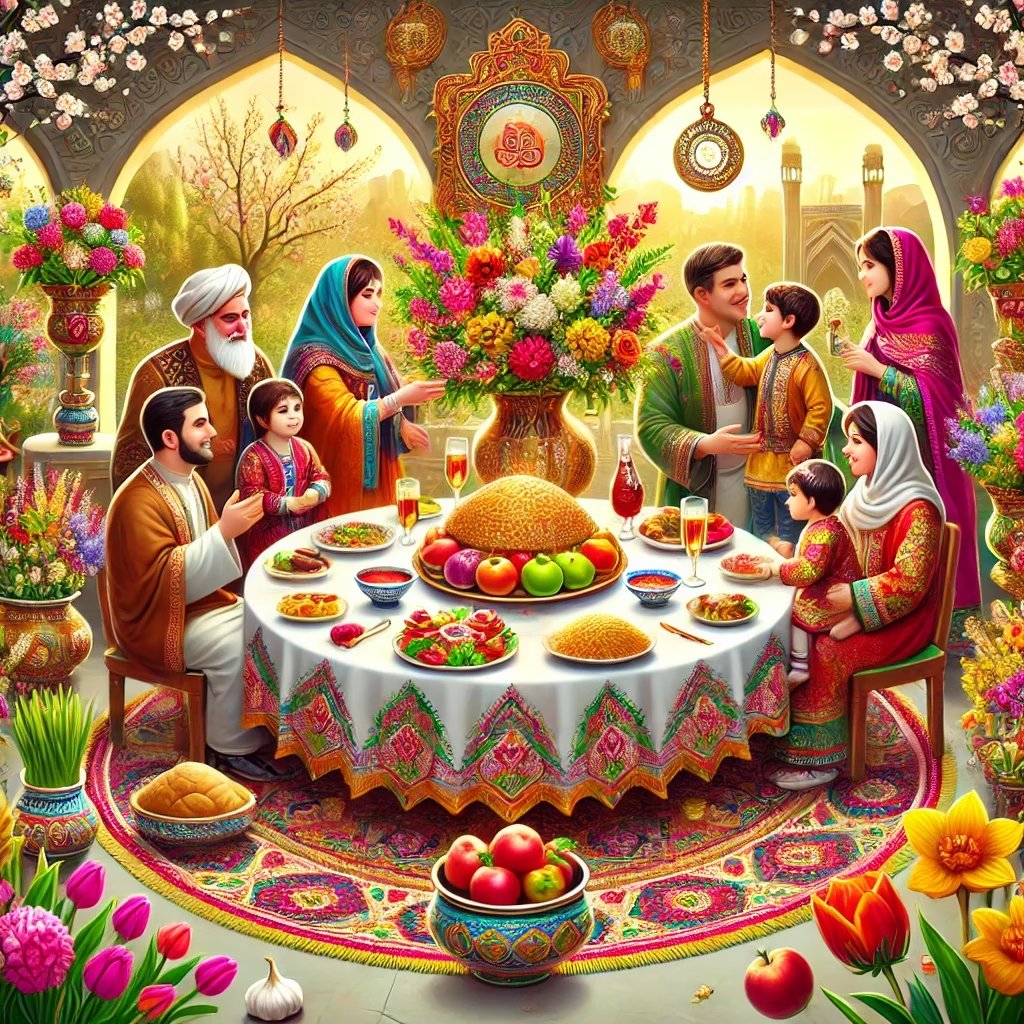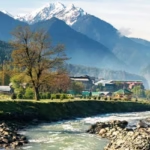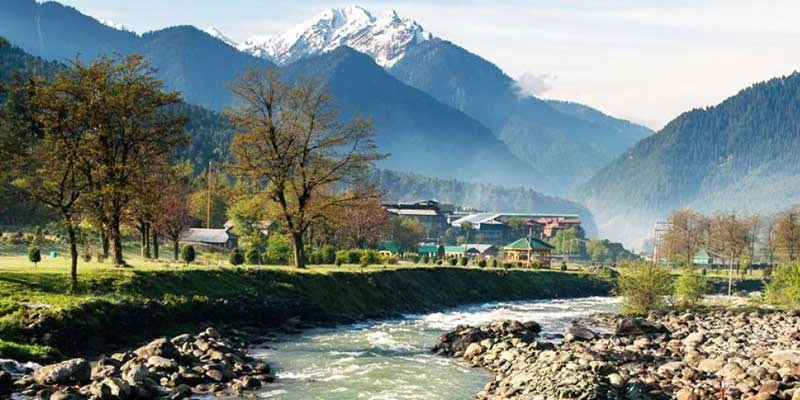As the winter frost begins to thaw and the first hints of spring emerge, millions of people across the world prepare to celebrate one of humanity’s oldest continuous celebrations—Nowruz, the Persian New Year. This ancient festival marks not just the turning of a calendar page, but a profound moment of renewal, hope, and connection that has survived empires, conquests, migrations, and modernization. As we approach the spring equinox on March 20th, communities from the Balkans to Western China are preparing their homes, cooking special meals, and setting traditional tables to welcome the “New Day” that has been celebrated for over three millennia.
The Ancient Origins: A Festival Born of Light and Darkness
The story of Nowruz begins in the misty origins of ancient Persia, where people watched the eternal dance between darkness and light. Imagine standing in the vast, sunlit plains of what is now Iran thousands of years ago, observing the gradual lengthening of days after a long, harsh winter. For the followers of Zoroastrianism—one of the world’s oldest continuously practiced religions—this moment represented more than just seasonal change; it marked a cosmic victory of light over darkness, good over evil.
The very name “Nowruz” reveals its purpose—”now” meaning new and “ruz” meaning day in Persian. This “new day” coincides precisely with the spring equinox, that perfect balance point where day and night stand equal before light begins its half-year reign. Archaeological evidence and ancient texts suggest Nowruz celebrations date back to at least the 6th century BCE during the Achaemenid Empire, though many scholars believe its roots reach even deeper into Iranian prehistory.
Within Zoroastrianism, Nowruz holds profound spiritual significance. It’s intrinsically connected with Rapithwin, the personification of summer and noon, who retreats during winter months only to return triumphantly at noon on Nowruz. This oscillation between seasons resonated deeply with Zoroastrian cosmology, which viewed existence as an ongoing battle between the forces of good and evil. The joyful celebration of spring’s return also connected to Zoroastrian eschatology, which foretold an eventual apocalypse resulting in humanity’s return to an original divine state of peace.
One of the most beloved origin stories comes from the epic poem Shahnameh (Book of Kings), compiled by the Persian poet Ferdowsi around 1010 CE. According to this telling, Nowruz began with the legendary King Jamshid. After creating civilization and ruling prosperously, Jamshid commissioned a magnificent throne studded with precious gems. When the throne was completed, he had it raised into the sky, where he sat shining like the sun. The world’s creatures gathered below in wonder, scattering jewels around him and declaring this magnificent day a “new day”—Nowruz. Thus began a tradition of feast, music, and celebration that would endure for millennia.
Surviving Through Conquest: Nowruz in Islamic Lands
Perhaps the most remarkable aspect of Nowruz is its incredible resilience. When Arab Muslim forces conquered Sasanian Persia in the 7th century CE, many expected the ancient Zoroastrian festival to disappear as Persian political control gave way to Islamic rule. Yet something extraordinary happened—rather than vanishing, Nowruz adapted. While some Persian celebrations were indeed sidelined, Nowruz persisted as a key civil holiday marking the new year among local Persian populations.
During the Abbasid Caliphate, Nowruz actually gained prominence as a royal holiday. The tradition of gift-giving continued, with local Iranian nobility (Dehqans) offering presents to caliphs and regional rulers during Nowruz, just as they had done for Sasanian kings. This political utility helped preserve the celebration through the early Islamic period.
The festival’s status strengthened further with the emergence of Iranian dynasties like the Samanids and Buyids in the 9th and 10th centuries. The Buyids, in particular, revived many ancient Sasanian traditions that had been suppressed during the early caliphate. Historical accounts tell us that the Iranian Buyid ruler ‘Adud al-Dawla (who ruled from 949–983 CE) celebrated Nowruz in spectacular fashion. He would welcome the New Year in a magnificent hall adorned with gold and silver plates, vases overflowing with fruit, and colorful flowers. Seated on his royal throne, he would receive the court astronomer who would formally announce the New Year’s arrival. Musicians and singers would entertain guests during elaborate feasts—a scene not so different from celebrations held thousands of years earlier.
When Turkic and Mongol forces later swept across Iran and Central Asia, they too embraced rather than abolished Nowruz. The celebration became so integral to the cultural landscape that even the Jalali calendar—created by a team of scholars including the famed poet and polymath Omar Khayyam in 1079 CE—was designed with Nowruz as its starting point.
More remarkable still is how Nowruz traveled westward along trade routes to places like Al-Andalus (Islamic Spain), where Andalusians from the 9th century onward strongly identified with Iranian traditions despite geographical distance and occasional opposition from religious authorities. From the 10th century, local nobility and governors sponsored these celebrations, though by the 12th century, religious jurists began encouraging alternative celebrations instead.
The Haft-Sin Table: Heart of the Modern Celebration
Walk into any home celebrating Nowruz today, and you’ll immediately notice the centerpiece of the modern celebration—the Haft-Sin table. This carefully arranged display contains seven symbolic items, each beginning with the Persian letter “S” (pronounced “seen”). Together, they represent hopes and wishes for the coming year while connecting celebrants to thousands of years of tradition.
The seven traditional items of the Haft-Sin are:
Sabzeh: Sprouted wheat, lentils, or other seeds representing rebirth and growth. Families often begin growing these sprouts weeks before Nowruz.
Samanu: A sweet pudding made from germinated wheat, symbolizing affluence and fertility. Traditional preparation of samanu is labor-intensive, often involving all-night cooking sessions where women gather to stir the pot continuously while singing special songs.
Senjed: Dried oleaster fruit representing love and affection.
Seer: Garlic, which stands for medicine and self-care.
Sib: Apples, symbolizing health and beauty.
Somaq: Sumac berries representing the sunrise and the spice of life.
Serkeh: Vinegar, symbolizing age, patience, and wisdom.
Beyond these essential seven items, families often add other symbolic elements to personalize their display. Common additions include a mirror (representing self-reflection), painted eggs (fertility and happiness), coins (prosperity), hyacinths or other flowers (the blooming of spring), traditional poetry books like Hafez’s Divan, and a bowl with goldfish (representing life and movement).
The attention to detail in preparing the Haft-Sin table reveals much about Nowruz itself—it’s a celebration that values deliberate preparation, symbolic meaning, and the blending of natural elements with human aspiration. When the exact moment of the equinox arrives, families gather around their Haft-Sin table to mark the precise transition to the new year, often embracing each other and exchanging well-wishes as they begin fresh.
Spring Cleaning and New Beginnings: Preparing for Nowruz
The preparations for Nowruz begin long before the spring equinox arrives. Several weeks before the New Year, households undertake “khaneh tekani” or “shaking the house”—a thorough spring cleaning that leaves no corner untouched. This tradition speaks to Nowruz’s underlying philosophy—that outer order reflects and facilitates inner renewal.
Families wash carpets, clean windows, clear out closets, repair items, and sometimes repaint walls. New clothes are purchased, representing the fresh start that Nowruz promises. This cleaning ritual isn’t just practical—it’s considered a way of clearing away the past year’s misfortunes and making space for new blessings. The home, freshly cleaned and organized, becomes a symbolic vessel ready to receive prosperity in the coming year.
The Wednesday before Nowruz brings one of the festival’s most dramatic traditions—Chaharshanbe Suri or “Red Wednesday.” As darkness falls, people gather outside to light bonfires in public spaces, leaping over the flames while reciting “Give me your beautiful red color and take back my sickly pallor!” This fire-jumping ritual symbolically transfers the fire’s warmth and energy to the jumper while burning away illness and problems. The evening continues with fireworks, music, and the sharing of special nuts and fruits, creating a festive atmosphere that builds anticipation for Nowruz itself.
In the final days before the New Year, markets bustle with activity as people purchase the seven Haft-Sin items, new clothes, flowers, and ingredients for traditional dishes. Bakeries work overtime producing special Nowruz cookies and sweets like baklava, ghotab, and noon-e bereneji (rice cookies). The air fills with anticipation and the scent of hyacinths—the official flower of Nowruz—which appear in homes and markets everywhere.

The Thirteen Days of Celebration: Rituals and Customs
While preparations may begin weeks in advance, the actual Nowruz celebration spans thirteen days, each with its own customs and significance. The festivities begin at the exact moment of the spring equinox—which can occur at any time of day or night—when families gather around their Haft-Sin table to usher in the New Year.
The first day of Nowruz centers around family visits, with younger family members traditionally visiting their elders. These visits involve the exchange of gifts, usually money or gold coins given to children and younger family members. Special Nowruz foods are served, including sabzi polo mahi (herbed rice with fish), kuku sabzi (herb frittata), and various sweets and pastries. The atmosphere is one of joy and congeniality, with homes open to visitors throughout the day.
The second day might involve visiting extended family or close friends, continuing the pattern of social connection that defines the holiday. Some regions have specific customs for particular days—for instance, the third day might be dedicated to visiting the graves of loved ones, bringing flowers and sharing food at the cemetery.
One of the most charming Nowruz traditions occurs on the thirteenth and final day of celebrations, called Sizdah Bedar. On this day, people leave their homes to spend the day outdoors in parks or countryside, effectively “casting out” the number thirteen, considered unlucky. Families pack picnics, play games, and enjoy music and dance. Young single women sometimes tie knots in grass blades, expressing their hopes for finding a suitable marriage partner in the coming year. At day’s end, the sabzeh (sprouts) from the Haft-Sin table, having absorbed the family’s sickness and misfortune, are thrown into running water, symbolically carrying away problems for the year ahead.
Throughout these thirteen days, other traditions may include:
- Haji Firuz: A blackface character dressed in red who appears in the streets before Nowruz, singing and dancing to announce the coming celebration.
- Eidi: The tradition of giving new money (crisp, uncirculated bills) to children and young adults.
- Omid Bakhshi: The exchange of well-wishes and blessings for the New Year.
- Fal-e Hafez: Using the poetry of Hafez for divination about the coming year.
Beyond Iran: Nowruz Across Cultures and Borders
Though often associated primarily with Iran, Nowruz represents a remarkable example of a celebration that transcends national and religious boundaries. Today, it’s observed by diverse populations across a vast geographic expanse stretching from the Balkans to Western China.
In Afghanistan, Nowruz is called Nauroz and features the special dish Haft Mewa—a fruit salad containing seven dried fruits and nuts soaked in water. Kabul’s Mazar-i-Sharif becomes the center of celebrations, with its shrine to Ali ibn Abi Talib covered in spectacular displays of tulips and the raising of the Janda, a special banner believed to bring good fortune.
In Azerbaijan, preparations begin a month before with the “Four Wednesdays” celebrations leading up to Novruz. Each Wednesday represents an element—water, fire, earth, and wind—with corresponding rituals. The holiday includes characters like Kosa (Old Man Winter) and Bahar (Spring) who perform comedic skits symbolizing the transition of seasons.
Kurdish communities celebrate Newroz with particular passion, as for them, the holiday carries additional significance as a symbol of Kurdish identity and resistance. According to Kurdish tradition, Newroz commemorates the day when Kawa the Blacksmith defeated the tyrannical Assyrian king Zohak, freeing the Kurdish people. Massive public gatherings feature bonfires, dancing, and traditional music, with women taking active roles in celebrations, embodying values of gender equality.
In Tajikistan, Navruz celebrations include the preparation of sumalak, a sweet paste made from germinated wheat, cooked overnight in a massive pot with women taking turns stirring while singing traditional songs. The dish symbolizes hope and abundance for the coming year.
Turkish communities celebrate Nevruz as the day when Turks first left their mythical homeland of Ergenekon. The holiday includes egg-tapping contests (where participants knock hard-boiled eggs together to see whose remains uncracked) and jumping over bonfires.
UNESCO recognized the cultural significance of this widespread celebration in 2010, adding Nowruz to its Representative List of the Intangible Cultural Heritage of Humanity. The United Nations General Assembly also proclaimed March 21st as the International Day of Nowruz in 2010, acknowledging its status as a spring festival of Persian origin celebrated for over 3,000 years.
Political Dimensions: Resistance and Identity
While primarily a cultural celebration, Nowruz has occasionally taken on political dimensions throughout its long history. In recent decades, some religious authorities in Iran have attempted to downplay Nowruz celebrations due to their pre-Islamic Zoroastrian roots. Following the 1979 Iranian Revolution, some religious leaders discouraged traditional observances. However, the deep cultural attachment to Nowruz proved too strong to suppress, and the government eventually accommodated the celebrations, though sometimes attempting to emphasize Islamic elements.
In Afghanistan, the Taliban’s opposition to Nowruz has been more severe, with attempts to ban the celebration altogether as un-Islamic. Despite these prohibitions, many Afghans continue to observe Nowruz traditions clandestinely, seeing the celebration as an essential expression of cultural identity.
For Kurdish communities, Newroz carries profound political significance. Under various regimes, Kurdish Newroz celebrations have faced suppression, with public gatherings sometimes banned. The holiday became a symbol of Kurdish resistance and cultural survival, with celebrations serving as demonstrations of Kurdish identity and unity. The legend of Kawa the Blacksmith overthrowing a tyrant resonates powerfully with Kurdish political narratives of resistance against oppression.
The reclamation of Nowruz narratives by diverse communities represents what some scholars call a pluricentric approach to cultural identity—one that recognizes multiple centers of cultural authority rather than a single homogenizing influence. This approach allows for varied interpretations and expressions of the same cultural heritage, accommodating the needs and contexts of different communities while maintaining connection to shared traditions.
The Spirit of Nowruz: Universal Themes in a Specific Celebration
What makes Nowruz so resilient across time, geography, and changing political landscapes? Perhaps it’s the universal themes embedded in this specific cultural celebration—themes that speak to fundamental human experiences and hopes.
At its core, Nowruz celebrates renewal. The timing at the spring equinox connects it intimately with natural cycles that humans have observed since our earliest days—the return of warmth, growth, and abundance after winter’s scarcity. This connection to natural rhythms gives Nowruz an authenticity that transcends any specific religious or political framework. When we celebrate the returning sun and sprouting plants, we participate in what might be humanity’s oldest form of celebration.
The emphasis on cleanliness, new clothes, and fresh beginnings speaks to our universal desire for second chances and new opportunities. The Haft-Sin table, with its items symbolizing health, love, prosperity, and patience, represents universal human aspirations. Who doesn’t wish for sweetness, growth, and renewal in their lives?
Nowruz’s focus on family bonds and intergenerational connection speaks to our social nature and need for community. The prescribed visits to elders, the gathering of extended families, and the exchange of gifts strengthen social fabric in ways that benefit communities regardless of specific cultural context.
Finally, the symbolism of light conquering darkness resonates across cultural and religious boundaries. Whether this battle is interpreted through Zoroastrian cosmology, Islamic tradition, or secular humanism, the metaphor of emerging from darkness into light speaks to fundamental human experiences of overcoming hardship and finding hope.
Nowruz in the Modern World: Adaptation and Persistence
Like all living traditions, Nowruz continues to evolve while maintaining its core elements. In diaspora communities across Europe, North America, and Australia, Iranian, Afghan, Kurdish, and other Nowruz-observing families adapt celebrations to new environments. Picnics might move from countryside meadows to urban parks; ingredients for traditional dishes might be sourced from international markets rather than local bazaars; video calls might replace some in-person visits. Yet the essence remains—renewal, connection, hope for the future.
Social media has transformed how Nowruz is shared and experienced, with Instagram feeds filling with beautiful Haft-Sin displays and TikTok videos demonstrating traditional cooking techniques. These platforms allow younger generations to engage with traditions in new ways while connecting dispersed communities across continents.
Climate change poses challenges to a celebration so intimately tied to seasonal transition. When spring arrives earlier or winter lingers longer, the connection between calendar date and natural phenomena becomes less reliable. Yet the spring equinox itself—that astronomical moment of perfect balance—remains constant, providing an anchor for celebration regardless of local weather conditions.
Despite these changes and challenges, Nowruz demonstrates remarkable continuity. A family gathering around a Haft-Sin table in Toronto, Stockholm, or Sydney performs essentially the same ritual as ancestors did thousands of years ago in ancient Persia. A child receiving crisp new bills as Eidi experiences the same delight as countless generations before. A pot of Samanu stirred through the night connects modern cooks with an unbroken chain of tradition stretching back millennia.
Embracing the New Day
As another spring approaches and millions prepare to celebrate Nowruz, we’re reminded of humanity’s remarkable capacity for cultural persistence and adaptation. This ancient festival—with roots reaching back to the dawn of civilization—continues to bring meaning, joy, and connection to diverse communities across the world.
Perhaps there’s wisdom in this enduring celebration of renewal. In a world often focused on novelty and disruption, Nowruz reminds us that some human experiences remain constant across time and culture—the appreciation of nature’s cycles, the importance of beginning again, the centrality of family and community, the hope for prosperity and health in the year ahead.
Whether observed in Tehran or Toronto, Kabul or Copenhagen, Diyarbakır or Dallas, Nowruz connects celebrants to both ancient traditions and timeless aspirations. As the earth tilts toward another spring, we might all find inspiration in this celebration of the eternal new beginning—the fresh start that nature offers each year, and that humans have honored for over three millennia with cleaning, cooking, gathering, and hope.
Happy Nowruz to all who celebrate, and may the coming year bring the renewal, growth, and sweetness symbolized in those seven special items on the Haft-Sin table.
Citations:
- https://www.britannica.com/topic/Nowruz
- https://kentaltravel.com/en/blog/what-is-nowruz-history-traditions/
- https://en.unesco.org/silkroad/content/nowruz-rebirth-nature
- https://blogs.bodleian.ox.ac.uk/oil/category/islamic-collection/
- https://tishk.org/blog/blog/kurdistani-newroz-vs-iranian-nowruz-conflicting-narratives-and-agencies-in-kurdistan/
- https://www.humanities.uci.edu/news/nowruz-then-and-now
- https://en.wikipedia.org/wiki/Nowruz
- https://en.unesco.org/silkroad/content/nowruz-gathering-people-common-heritage-along-silk-roads
Answer from Perplexity: pplx.ai/share











